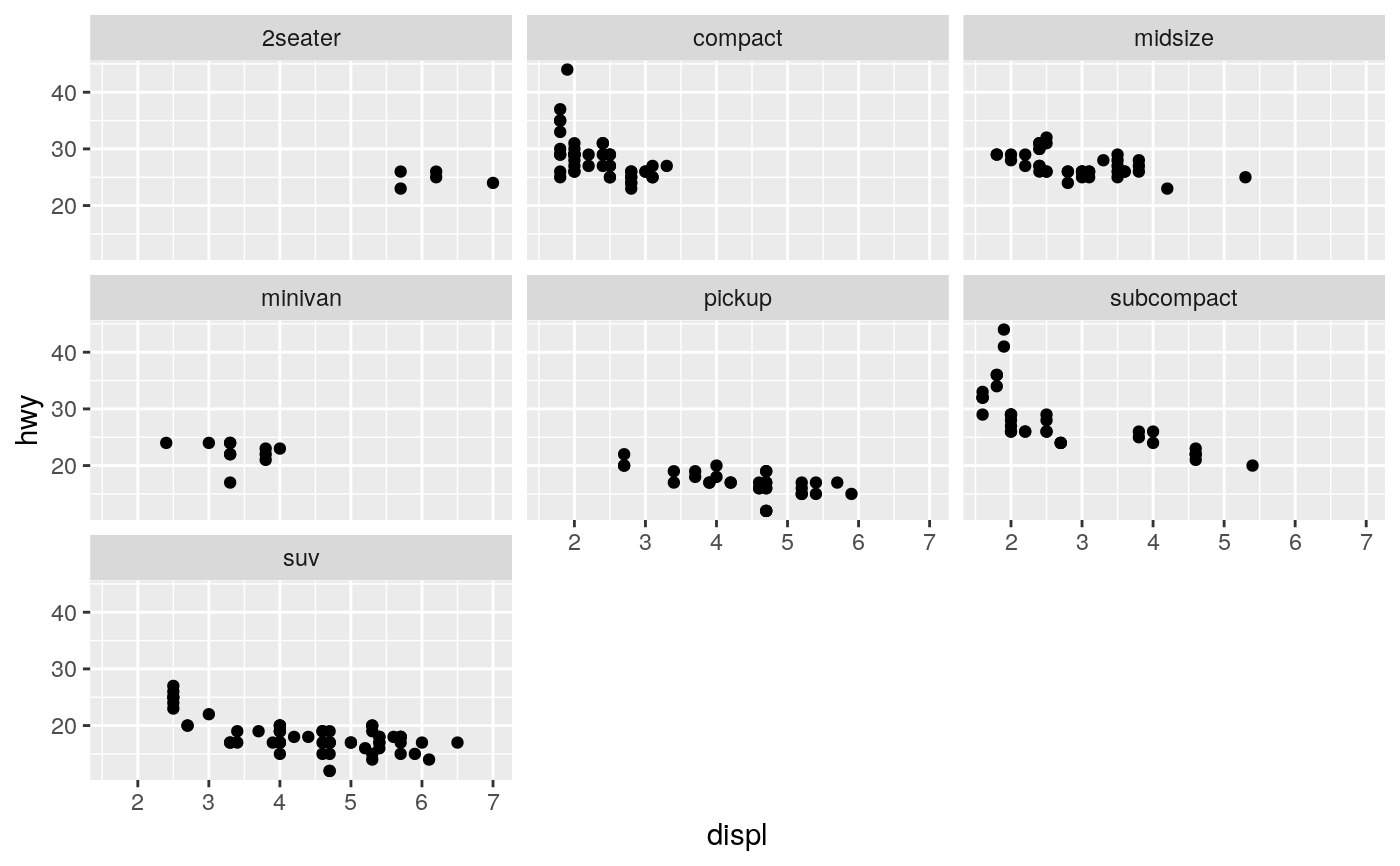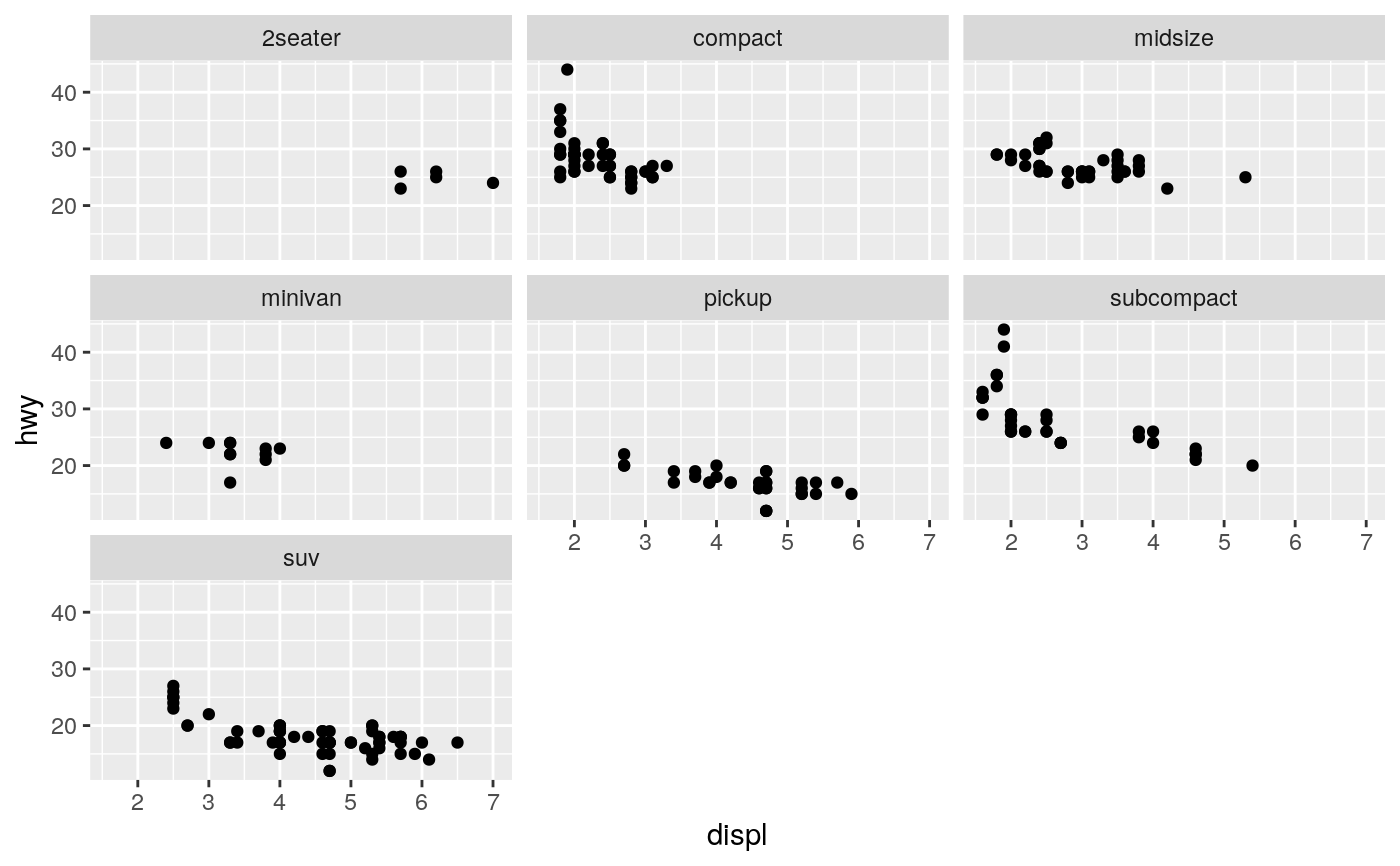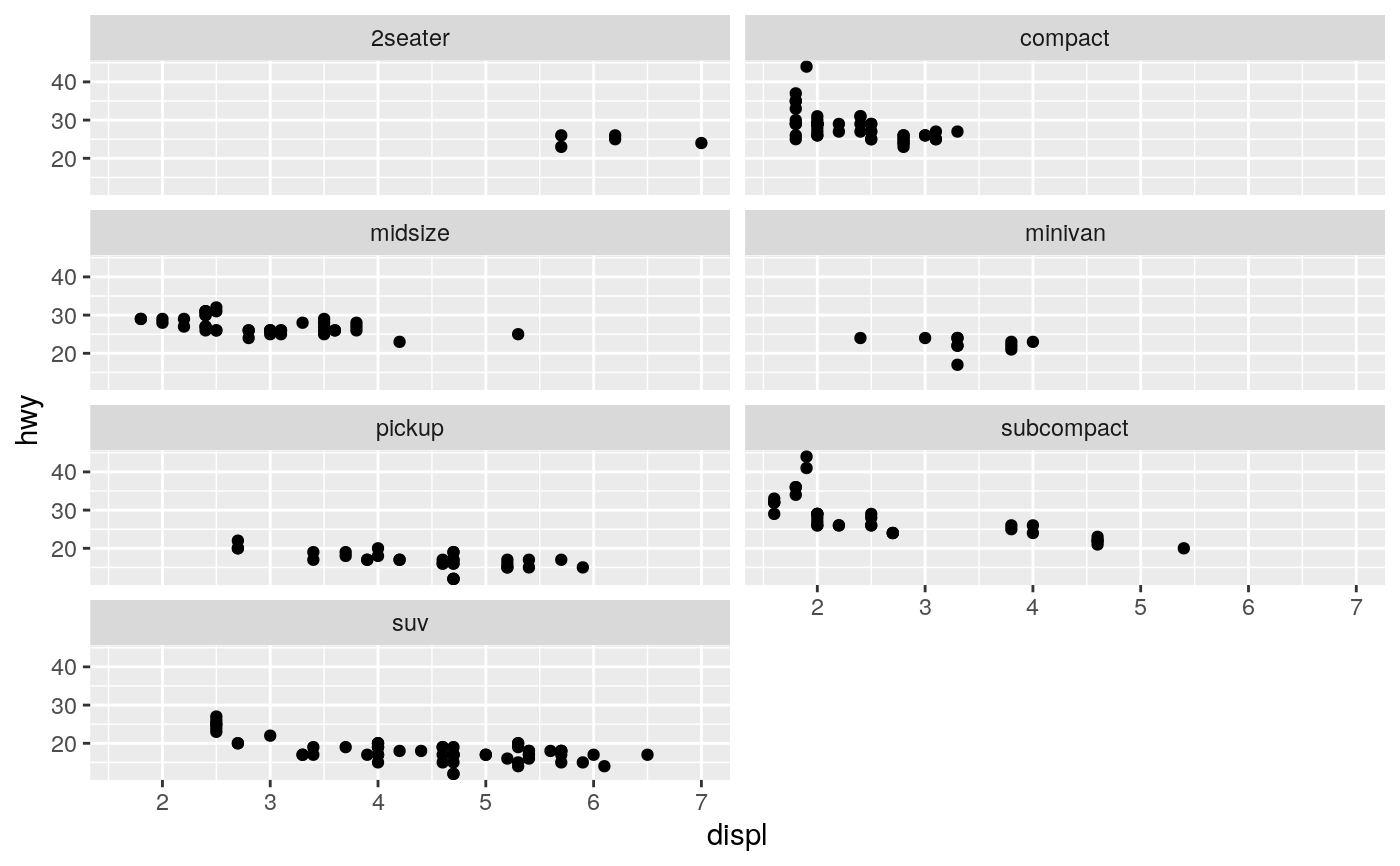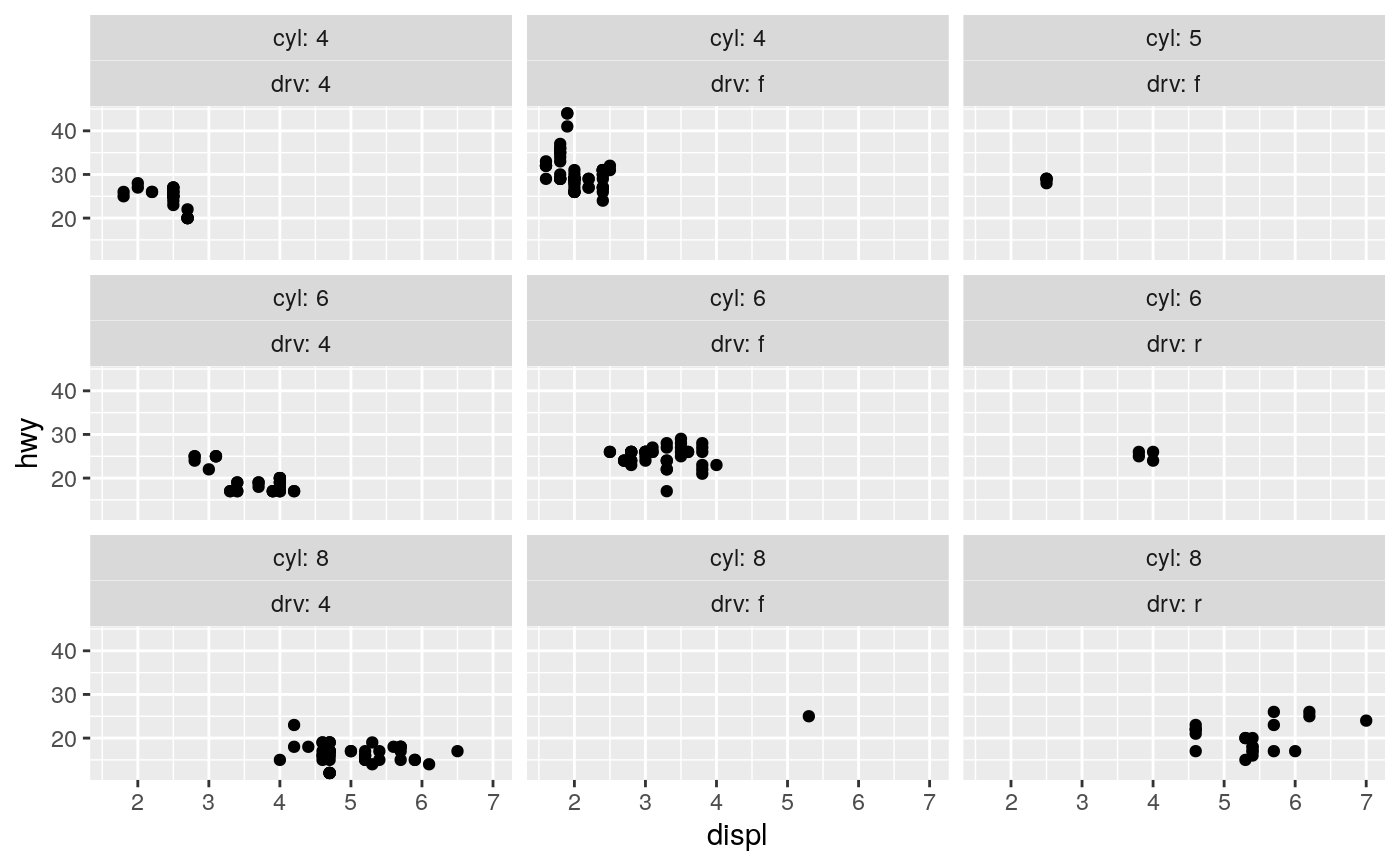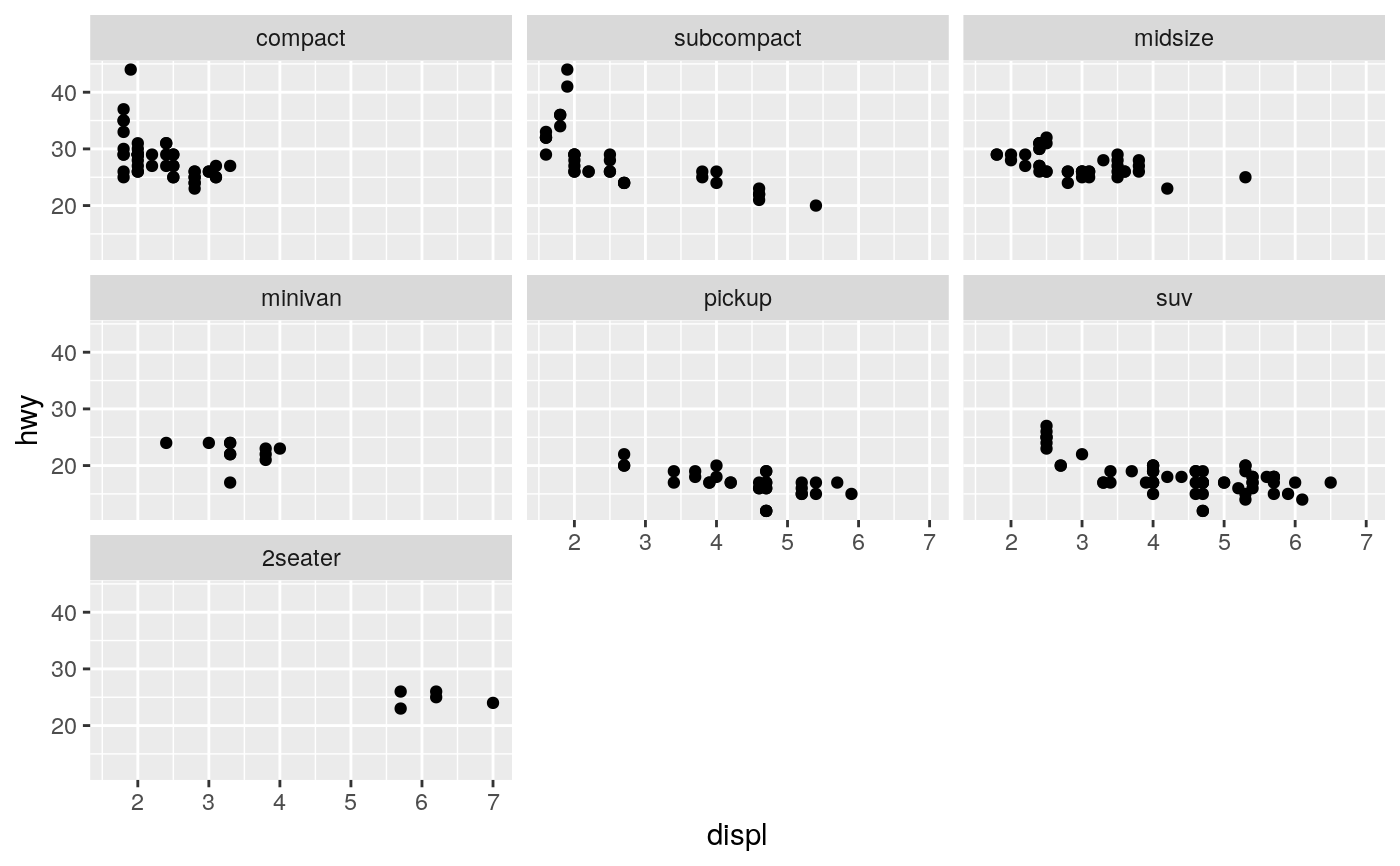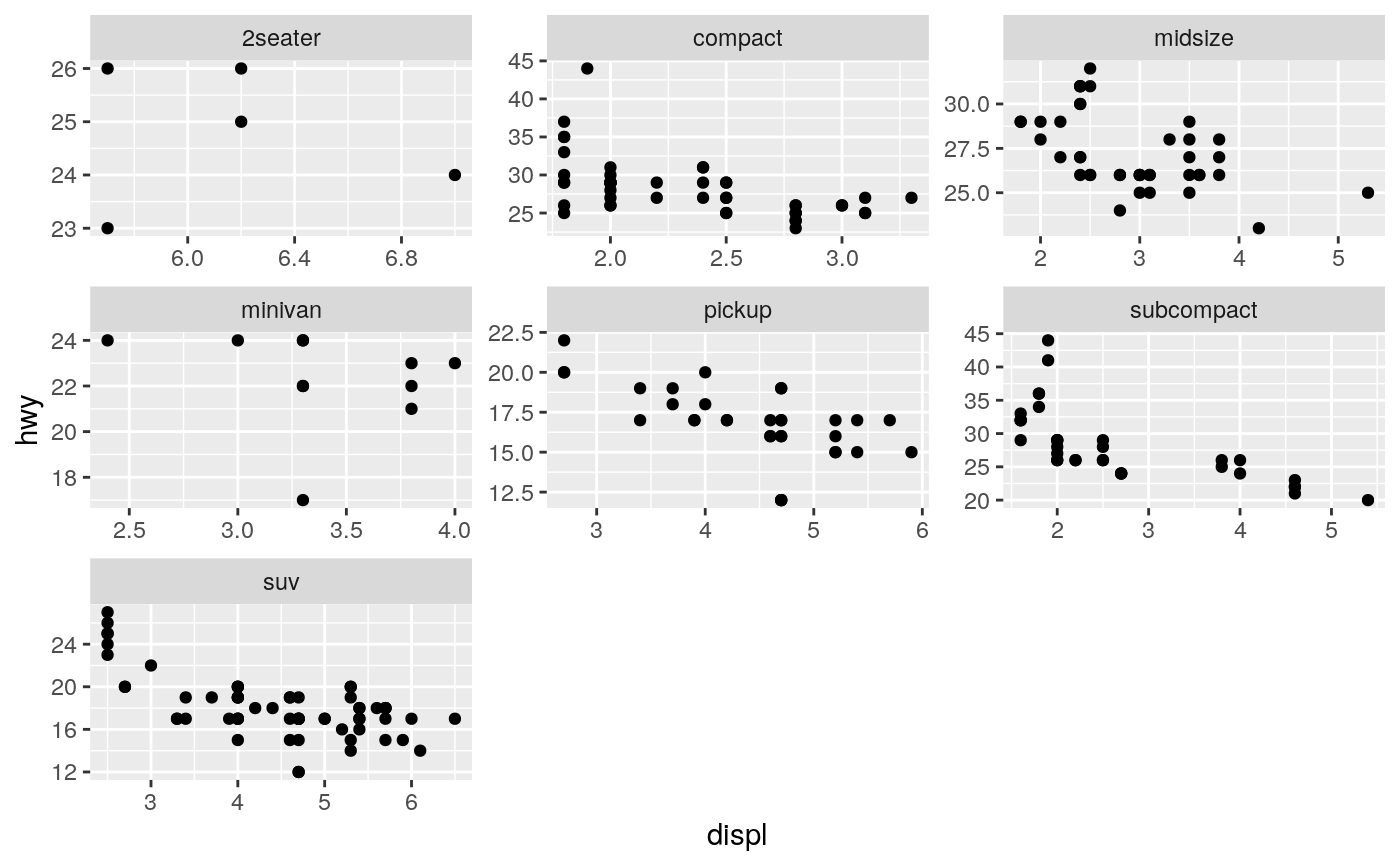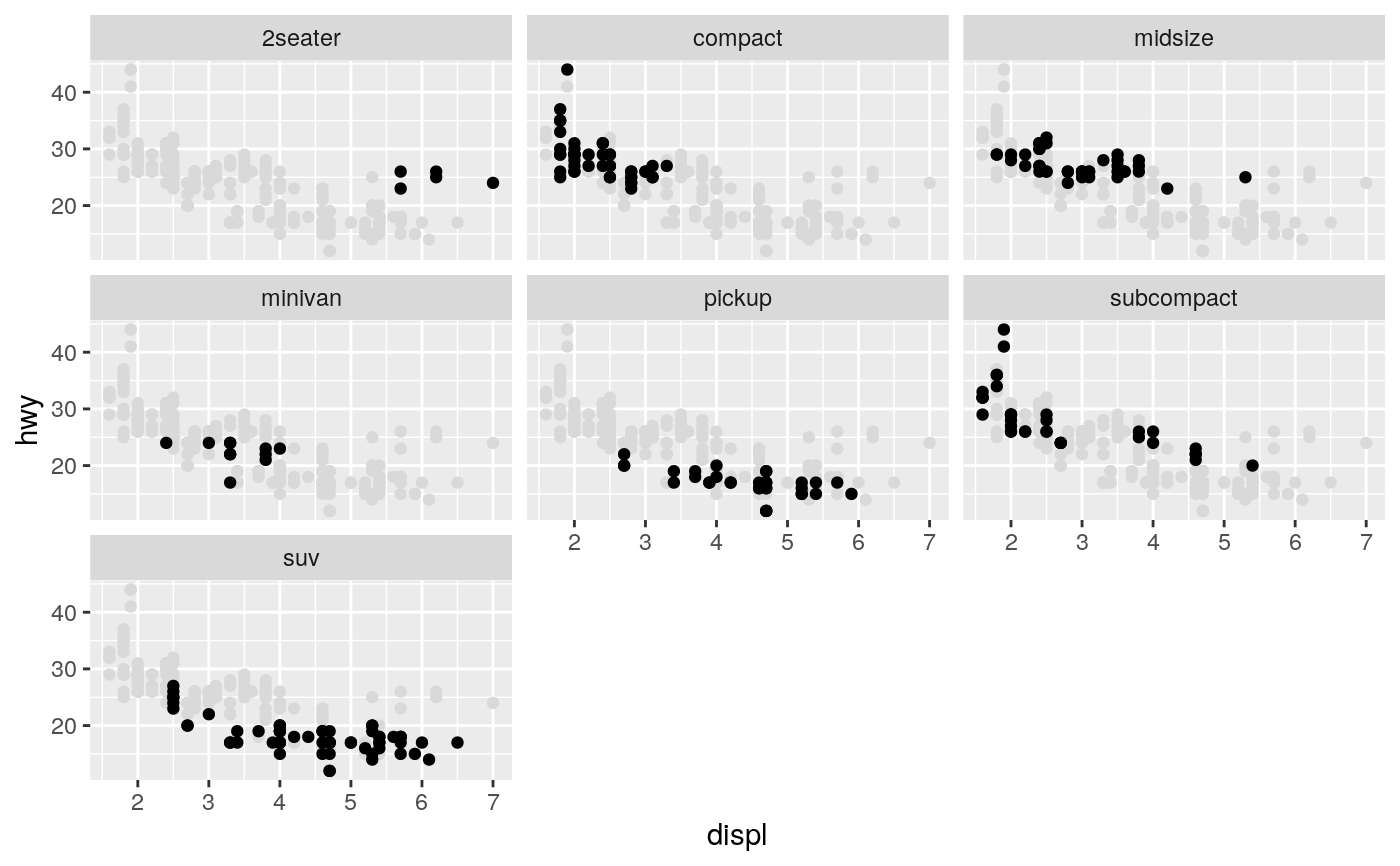facet_wrap wraps a 1d sequence of panels into 2d. This is generally
a better use of screen space than facet_grid() because most
displays are roughly rectangular.
facet_wrap(facets, nrow = NULL, ncol = NULL, scales = "fixed", shrink = TRUE, labeller = "label_value", as.table = TRUE, switch = NULL, drop = TRUE, dir = "h", strip.position = "top")
Arguments
| facets | A set of variables or expressions quoted by For compatibility with the classic interface, can also be a
formula or character vector. Use either a one sided formula, |
|---|---|
| nrow, ncol | Number of rows and columns. |
| scales | Should scales be fixed ( |
| shrink | If |
| labeller | A function that takes one data frame of labels and
returns a list or data frame of character vectors. Each input
column corresponds to one factor. Thus there will be more than
one with formulae of the type |
| as.table | If |
| switch | By default, the labels are displayed on the top and
right of the plot. If |
| drop | If |
| dir | Direction: either |
| strip.position | By default, the labels are displayed on the top of
the plot. Using |
Examples
p <- ggplot(mpg, aes(displ, hwy)) + geom_point() # Use vars() to supply faceting variables: p + facet_wrap(vars(class))# The historical interface with formulas is also available: p + facet_wrap(~class)# \donttest{ # You can facet by multiple variables ggplot(mpg, aes(displ, hwy)) + geom_point() + facet_wrap(vars(cyl, drv))# Use the `labeller` option to control how labels are printed: ggplot(mpg, aes(displ, hwy)) + geom_point() + facet_wrap(c("cyl", "drv"), labeller = "label_both")# To change the order in which the panels appear, change the levels # of the underlying factor. mpg$class2 <- reorder(mpg$class, mpg$displ) ggplot(mpg, aes(displ, hwy)) + geom_point() + facet_wrap(~class2)# By default, the same scales are used for all panels. You can allow # scales to vary across the panels with the `scales` argument. # Free scales make it easier to see patterns within each panel, but # harder to compare across panels. ggplot(mpg, aes(displ, hwy)) + geom_point() + facet_wrap(~class, scales = "free")# To repeat the same data in every panel, simply construct a data frame # that does not contain the faceting variable. ggplot(mpg, aes(displ, hwy)) + geom_point(data = transform(mpg, class = NULL), colour = "grey85") + geom_point() + facet_wrap(~class)# Use `strip.position` to display the facet labels at the side of your # choice. Setting it to `bottom` makes it act as a subtitle for the axis. # This is typically used with free scales and a theme without boxes around # strip labels. ggplot(economics_long, aes(date, value)) + geom_line() + facet_wrap(~variable, scales = "free_y", nrow = 2, strip.position = "bottom") + theme(strip.background = element_blank(), strip.placement = "outside")#> Warning: Suppressing axis rendering when strip.position = 'bottom' and strip.placement == 'outside'# }
